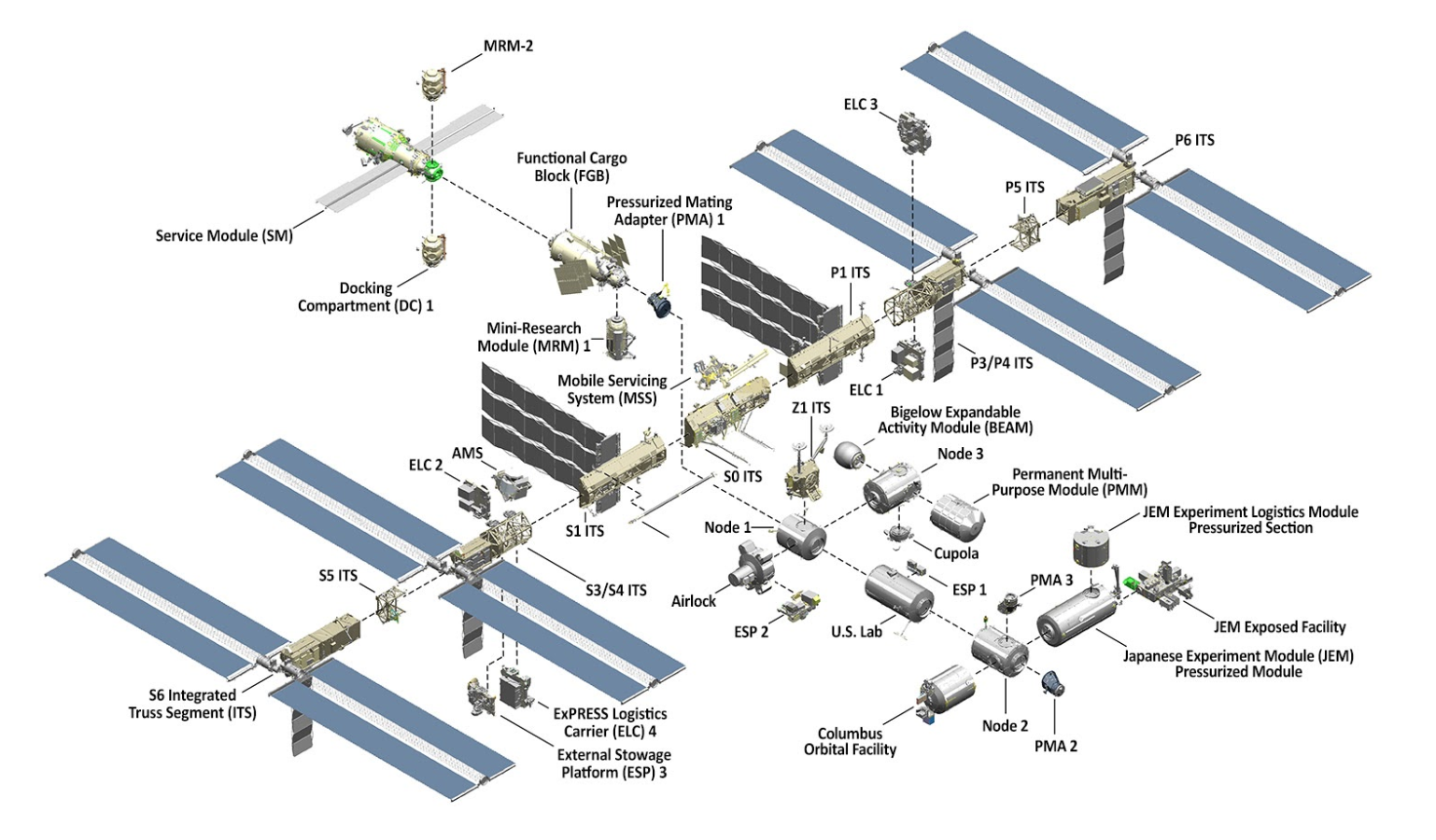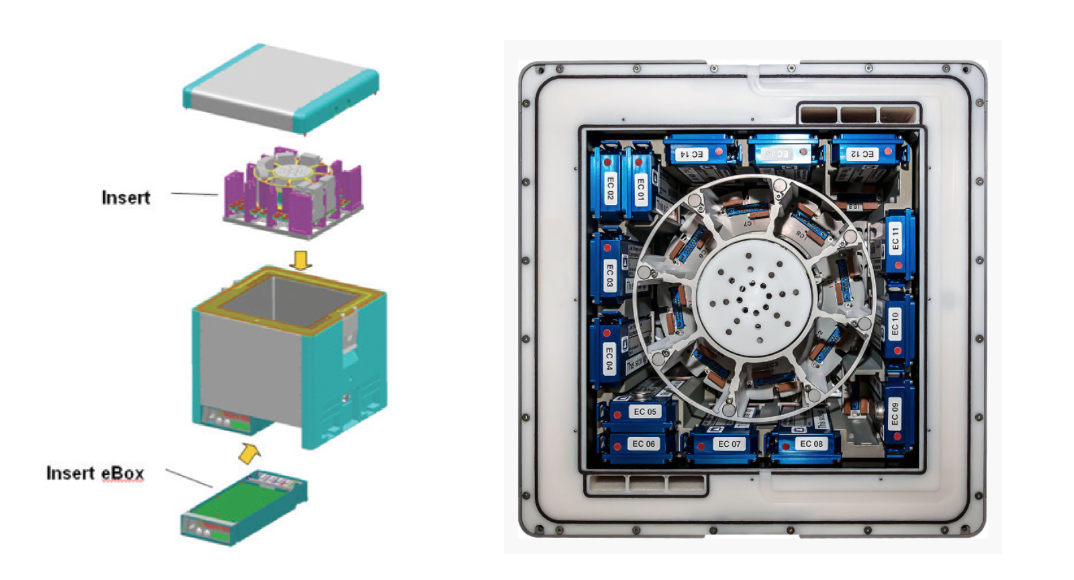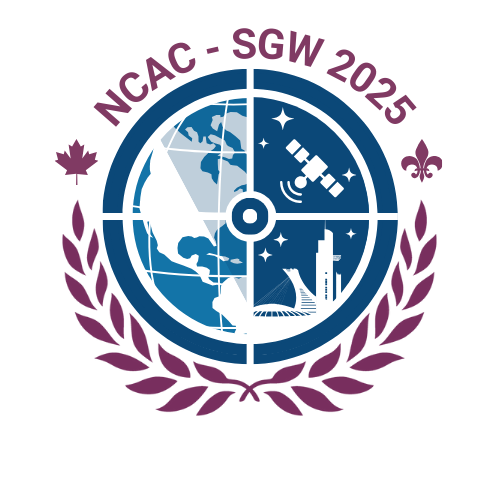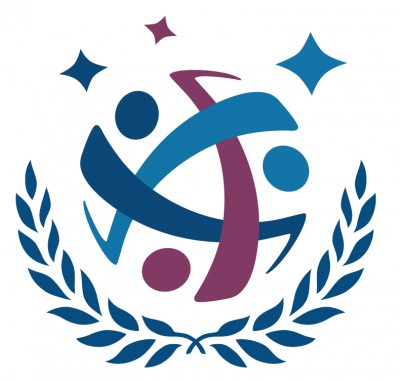Commercial business on board the International Space Station
by Simone PATERNOSTRO
How European Space Agency is supporting this new endeavour – Simone PATERNOSTRO highlights major break-through partnerships for microgravity experiments
We live in an exciting and interesting Space era, in which the National Agencies keep developing their assets, technologies and strategies, while the increased interest from the private sector is helping change the landscape, in particular in the space exploration area.
After three years working as contractor for the European Space Agency team, and managing planning and supporting the execution of the experiment on board the International Space Station (ISS), I am now witnessing one of the great changes on the European side of the Space Community: commercial activities on board of the ISS.
What is ISS?
The International Space Station (ISS) programme represents a joint project between five participating space agencies: NASA (United States), Roscosmos (Russia), ESA (European Space Agency – Europe), JAXA (Japan) and CSA (Canada).
An incredible microgravity platform created on strong collaboration between nations, the ISS received its first astronauts on 2 November 2000, Commander William M. (Bill) Shepherd of NASA and cosmonauts Sergei Krikalev and Yuri Gidzenko of Roscosmos. With their arrival on the orbiting laboratory, humanity marked the start of uninterrupted human presence in Space, conducting break-through microgravity research and testing new technologies.
The International Space Station components. Credits: https://www.nasa.gov/feature/facts-and-figures.
Towards commercial business partnerships
Thousands of experiments have been and continue to be performed on board the ISS, giving scientists the opportunity to study the effects of microgravity. One of these effects focuses on space environment impact on biological and non-biological systems, analysing parameters and processes without the influence of gravity. Notable research fields pursued on board the station include fluid physics, chemistry, medicine, biology, material sciences, heat transfer, radiation, astrophysics and technology testing.
In the last few years, a major decision towards involving the private sector in Space research has been made. European Space Agency opened a permanent call to commercial exploitation of the station, which has been the setting point for innovative partnerships to support the Agency’s Space Exploration strategy. In particular, ESA set up a call for co-funded studies on platforms and facilities in low Earth orbit. Three different partnerships have been already established for the International Space Station:
First European Commercial opportunity was launched and deployed on the International Space Station in the second half of 2018. This facility, developed by the Belgian company Space Applications Services (with more than 30 years experience in the field), provides a simple and affordable access to flight opportunities to perform research in microgravity or space environment. ICE Cubes Service is capable of hosting experiment cubes of different sizes that can quickly be deployed, offering an inclusive package: upload, Astronaut time and expert advice. As well, the platform is addressed to the educational sector, being open to STEM curricula for intra-school or inter-level collaboration, closing the gap between academic, industry and educational entities.
ICE Cubes Service. Credits: http://www.icecubesservice.com/
The second European commercial partnership is the Station’s newest payload system developed by Airbus Defence and Space. First payload launch is set to start from Q2/2020 and will be installed on the forward side of the European Module Columbus (the side facing the direction of the motion). The main objective of the platform is to give access at competitive cost to companies or institutes to external locations on the International Space Station, to perform research in an unpressurised environment. The platform offers a series of interesting features, like unobstructed view of Earth, direct control of the experiments from the ground and the possibility of installing and removing samples.
United Nations for Outer Office Space Affairs in partnership with Airbus Defence and Space GmbH offer UN Member States the opportunity to accommodate a payload on to the Bartolomeo external platform. This mission is addressed for the Sustainable Development Goals and the deadline for applications is now extended until 30th April 2020 – Access Space with Bartolomeo platform – UNOOSA opportunity official website.
ISS Bartolomeo platform
Credits: https://www.unoosa.org/oosa/en/ourwork/psa/hsti/orbitalmission/bartolomeo/index.html
Set as partnership between ESA and Kayser Italia company, the project aims to establish an “express” way to perform scientific and technological experiments on board of the ISS, by using the on board ESA Columbus facility, KUBIK, a small controlled-temperature incubator or cooler with removable inserts, designed for self-contained microgravity experiments in different field: biology, biotech, human research, fluid physics, materials science. The objectives of the partnership is to enable the use of the research hardware by commercial customers, reducing costs and development time.
Bioreactor Express – KUBIK – Experiment container
Credits: http://www.bioreactorexpress.com/
Multi-stakeholder collaboration
The three described partnerships represent just a starting point of what it seems to be a possible future development for the Space field and a first shy step for the European Space sector. These bring new opportunities for companies, research institutes and universities to get fast access to a long term microgravity research platform like the International Space Station at a competitive price and they already cover a wide range of possible applications (e.g. radiation and space environment studies, biology, fluid physics, material and many more) thanks to their modular concept.
Each experiment performed in orbit allows the scientists and engineers to make a step ahead in better understanding physics laws and nature processes, opening up opportunities for new concepts and technologies. Additionally, they represent a new opportunity for the European Space commercial sector to become less dependent from National Agencies; it is expected that more and more companies will come up with new ideas and business cases, invest in space, strengthening the multi-stakeholder collaboration. Developing new technologies for the exploration and exploitation of space resources will ultimately bring benefits on Earth and Humanity.
Understanding what lays for the future of ISS, looking at probably another 10 years in orbit, coming up with innovative ideas for humanity challenges, or creating new habitats and modules that could be attached requires opening Space Affaires not only for the private sector, but for everyone.

Simone Paternostro is a Space Engineer, currently ISS Multi-Increment Payload Planning Engineer part of Space Application Services NV/SA team for ESA – ESTEC. He has a strong interest for Human Spaceflight and Space Exploration that drove him to join SGAC for which he hopes to support and contribute the Space Exploration Project Group. Additionally, he is a volunteer for the Austrian Space Forum, supporting Mars Analog Missions as Flight Director of their Mission Support Center and as recently selected Analog Astronaut.






